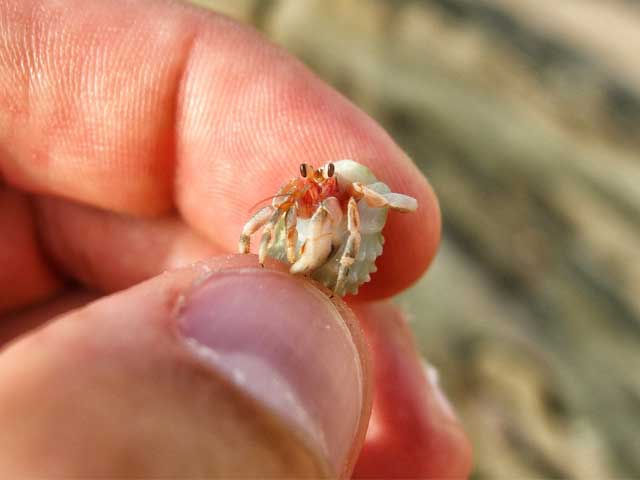
Beach ecosystems are home to a fascinating variety of animal life. Here’s a breakdown of some of the most common animals you’ll find in and around beaches:
1. Crustaceans
- Crabs: These are perhaps the most iconic beach dwellers. Common species include ghost crabs, fiddler crabs, and hermit crabs. Crabs are often found scuttling across the sand or hiding in burrows.
- Lobsters and Shrimp: Some species, like sand shrimp, can be found burrowing in the sandy or muddy shores, while others, such as spiny lobsters, are found in rockier coastal areas.
- Barnacles: These small crustaceans attach themselves to rocks, piers, or even other animals like turtles and whales.
2. Mollusks
- Clams, Mussels, and Oysters: These bivalves often live in intertidal zones, buried in the sand or attached to rocks. Their shells protect them from predators and harsh environmental conditions.
- Snails: Sea snails like periwinkles and whelks can be found in the tidal pools and sandy areas of beaches.
- Octopuses and Squids: Though typically found in deeper waters, these cephalopods can occasionally be seen close to shore, especially in rocky beach areas.
3. Birds
- Seagulls: A common sight on many beaches, these opportunistic feeders are often seen scavenging for food, from fish to discarded snacks left by beachgoers.
- Pelicans: Large coastal birds, known for their pouch-like beaks, which they use to scoop up fish from the water.
- Sandpipers and Plovers: Small, wading birds that can often be seen darting along the shoreline, feeding on small invertebrates like worms and crustaceans.
- Oystercatchers: These birds have strong beaks used for prying open mollusks, a key part of their diet.
4. Fish
- Tidepool Fish: Fish like blennies, gobies, and tidepool sculpins can be found in the shallow pools left behind by receding tides.
- Sharks and Rays: In some coastal areas, smaller species of sharks and rays can be found swimming close to shore. Stingrays, for example, often bury themselves in the sand.
- Surfperch and Mullet: These are common fish species found in the shallow surf zones along many beaches.
5. Marine Mammals
- Seals and Sea Lions: In many regions, seals and sea lions can be spotted lounging on beaches or rocky outcrops.
- Dolphins: Dolphins are often seen swimming close to shore, riding the waves, and hunting for fish.
- Whales: In certain areas, particularly during migration seasons, you can spot whales from the beach as they pass close to shore.
6. Jellyfish
- Various species of jellyfish wash up on beaches, particularly after storms or strong currents. While they are beautiful, some species can sting, so beachgoers should be cautious.
7. Turtles
- Sea Turtles: Beaches are critical nesting sites for sea turtles. Female turtles come ashore to lay eggs in the sand, and later, the hatchlings make their way to the ocean.
8. Insects
- Beach Fleas (Sandhoppers): Tiny, jumping crustaceans that are found in the sand near the high tide line.
- Dragonflies and Mosquitoes: These are often found near coastal marshes or areas with standing water.
9. Invertebrates
- Sand Dollars and Sea Stars: Sand dollars are flat, burrowing echinoderms, while sea stars can often be found clinging to rocks or in tidal pools.
- Anemones: These beautiful, flower-like animals are often found attached to rocks or shells in tide pools.
10. Coral and Other Reef Life
- In tropical regions, coral reefs often exist close to beaches. These ecosystems support a vast array of life, including fish, invertebrates, and other marine organisms.
The richness of animal life on beaches depends largely on the type of beach (sandy, rocky, or coral-based) and its location. Coastal ecosystems are dynamic and home to both permanent residents and migratory species that rely on these environments for survival.